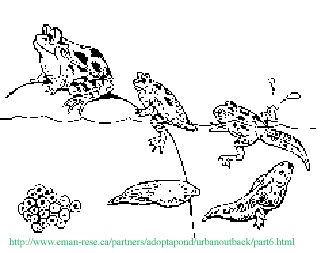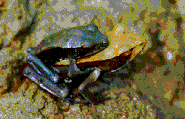|
The tadpoles grow and develop and finally metamorphose into terrestrial
juvenile, leaving behind aquatic characters. This has led to important ecological
and evolutionary implications on the amphibians. The individuals are exposed
to two entirely different ecosystems. In their early part of life cycle,
the eggs, which are anamniotic (no complex membranes around the embryo)
and devoid of protective shell layer, are susceptible to desiccation, pollution
and predation. Sites at which these eggs were laid, will also determine
the further development. The tadpoles must feed, breath and stay in water
that requires specific physical and physiological characters, defence mechanism,
habitat and food spectrum, where as the adults have to adapt for terrestrial
environment, leaving behind the aquatic characters and they might have dispersal
difficulties due to biological restraints.
In Caecilians, fertilization is internal. They may be oviparous (egg laying)
or viviparous (hatching young ones). Parental care is observed in oviparous
parents.
In Salamanders, the life cycle is more complex. The fertilization may be
internal or external. They have elaborate courtship display, includes, chemical,
visual and tactile cues. Paedomorphosis is common among Salamanders. In
this process, life history begins with aquatic eggs and they hatch release
the aquatic larvae. Under favourable conditions, these larvae retaining
some morphological characteristics become permanently aquatic reproducible
paedomorphic adults. Some times, the larvae undergo typical development
within one summer and metamorphose into a morphologically distinct but non-reproducible
terrestrial juvenile called eft. Depending on the temperature and availability
of food, eft stage lasts from 1-8 years. Efts for the second time undergoes
transformations to grow as reproductive adults.
|

